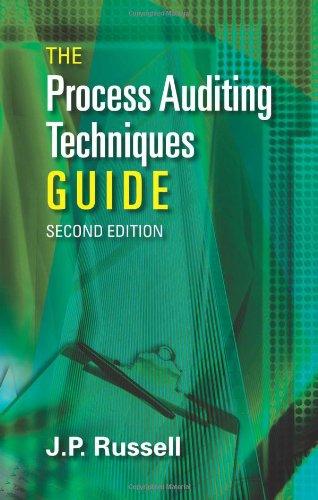Question
US Foodservice & Vendor Payments Auditing procedures require that inventory be reported at its cost or its net realizable value whichever is lower. The costing
US Foodservice & Vendor Payments
Auditing procedures require that inventory be reported at its cost or its net realizable value whichever is lower. The costing of inventory can be complex, especially for retailers and large wholesalers. Different industries have different practices regarding inventory purchases and the auditor needs to understand the relevant accounting procedures that apply to the particular industry when conducting the audit. One example is the requirement that allowances received from manufacturers by wholesalers or retailers be applied as a reduction in inventory cost when the inventory is paid for. Allowances accounted for incorrectly as income prior to having been earned can be used to manipulate income as shown in the example of US Foodservice.
US Foodservice, owned by Dutch supermarket operator Ahold NV, overstated its profits for 2001 and 2002 by a total of at least $500 million, through a scheme involving the booking of manufacturers promotional allowances or rebates. Faced with decreasing sales, the management of US Foodservice described in a conference call an "initiative" that would give those employees a chance to earn bonus money and help U.S. Foodservice meet its yearly earnings target, according to two senior managers who listened in.
The new strategy announced on the conference call last fall involved ordering huge quantities of food and paper goods from manufacturers such as Sara Lee Corp., Kraft Foods Inc., Georgia-Pacific Corp. and Nestle SA, the two U.S. Foodservice managers say. The manufacturers had agreed to pay the distributor hefty rebates ranging from 8.5% to 46%, which U.S. Foodservice may have booked immediately to try to boost 2002 earnings, one manager says. Soon, unusual quantities of frozen pies, bottled water, and other items began overflowing U.S. Foodservice's warehouses. The company had to rent additional space and hire cold-storage trucks to hold it all.
In addition, according to the SEC, US Foodservice in prior years had been recognizing all income from promotional allowance prepayments upon receipt. Under GAAP, USF should have recorded the prepayments as liabilities, because they were not yet earned. USF would not have met analysts' consensus earnings expectations without these adjustments, but with them USF met or exceeded these expectations every quarter in fiscal years 1998 and 1999. Mark Kaiser, USF's senior vice president, then executive vice president of sales and marketing, and Timothy Lee, executive vice president of USF's purchasing group, orchestrated the accounting fraud. Kaiser initiated the PA prepayment scheme in the mid-1990s. At his direction, USF negotiated deals with some of its largest vendors whereby USF would commit to purchasing a certain amount of product and the vendor would commit to paying USF a stated allowance before the purchases had been completed. Some prepayments were to be made directly by the vendor; others were to be made through a broker who worked with the vendor. Agreements with some vendors allowed the vendor to obtain a refund of the prepayments if USF did not purchase the agreed-upon amount.
Using the inventory audit procedures, describe how the fraud perpetrated by US Foodservice might have been uncovered. Would industry knowledge of the promotional allowances have helped the auditors to design procedures to detect this fraud?
Do you think that if the vendors cooperated in the fraud by confirming fictitious allowances, this affected the chances that the auditors were successful in detecting it?
Step by Step Solution
There are 3 Steps involved in it
Step: 1

Get Instant Access to Expert-Tailored Solutions
See step-by-step solutions with expert insights and AI powered tools for academic success
Step: 2

Step: 3

Ace Your Homework with AI
Get the answers you need in no time with our AI-driven, step-by-step assistance
Get Started


